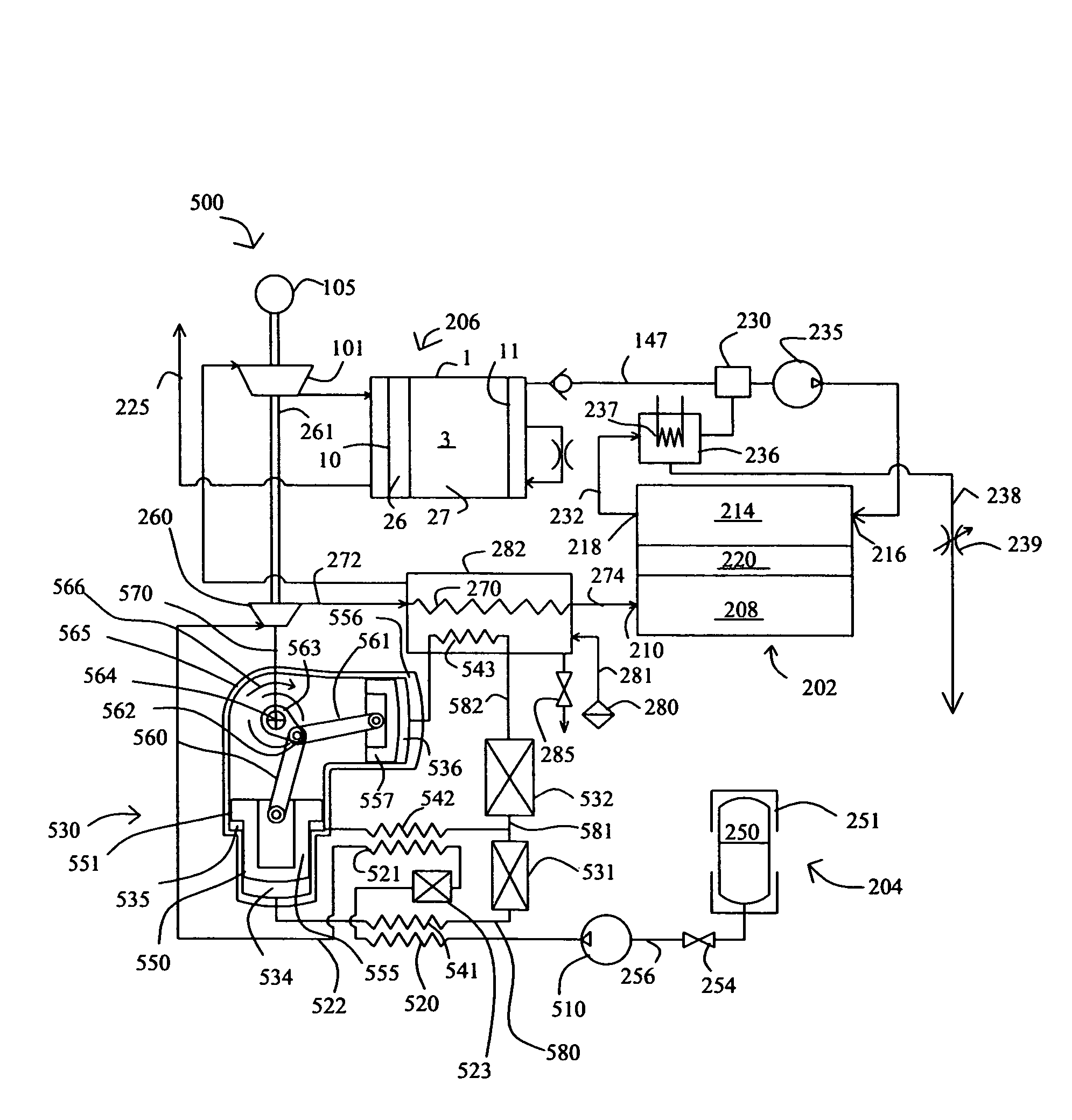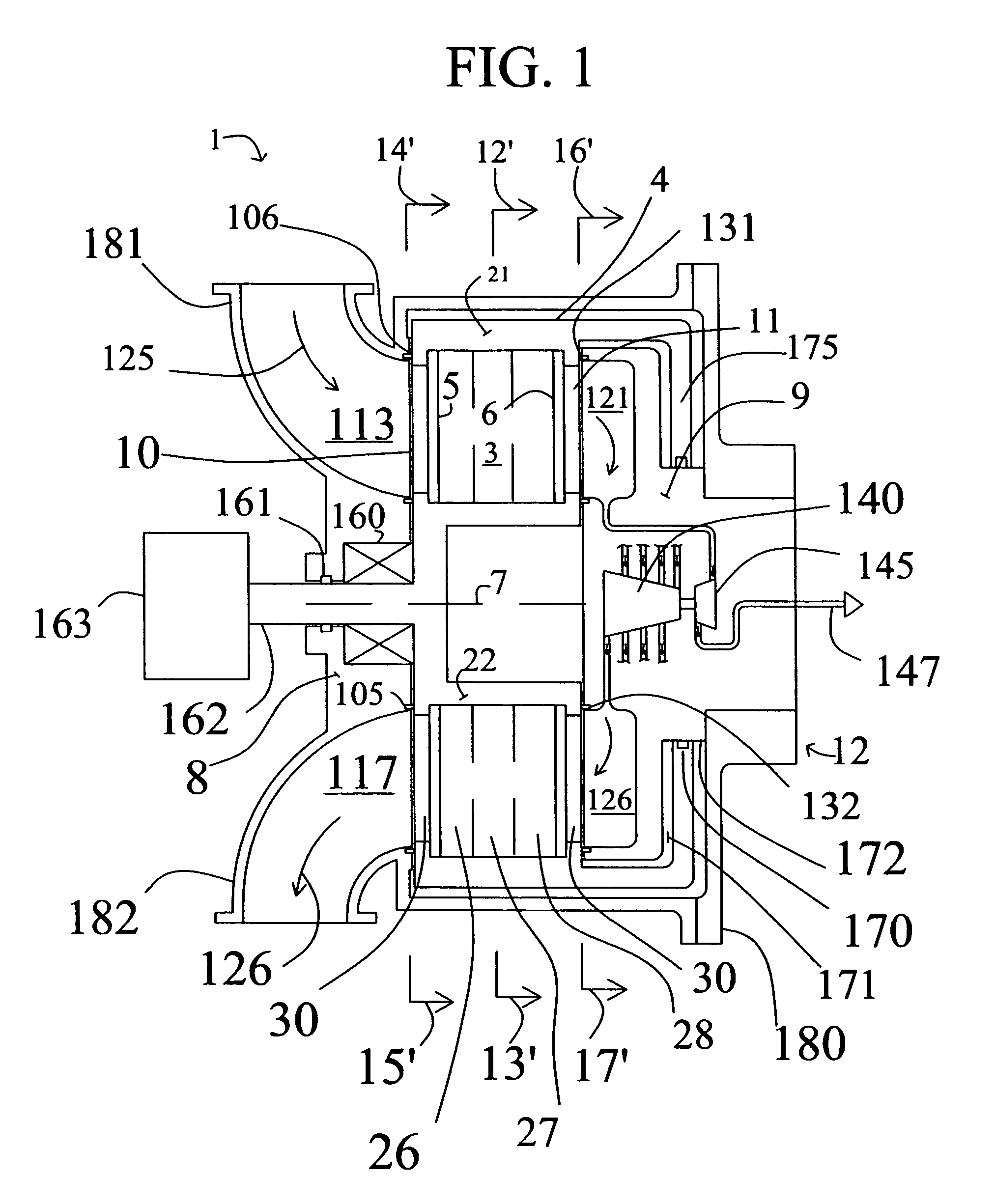Power plant with energy recovery from fuel storage
a technology of energy recovery and power plant, applied in the direction of fuel cell, steam engine plant, gas/liquid distribution and storage, etc., can solve the problems of serious technical and economic barriers, serious energy loss affecting the overall efficiency and economic viability, and gravely compromising the economic viability of hydrogen and natural gas as fuels for vehicular propulsion
- Summary
- Abstract
- Description
- Claims
- Application Information
AI Technical Summary
Benefits of technology
Problems solved by technology
Method used
Image
Examples
Embodiment Construction
Representative embodiments are described below with reference to the drawings. The following definitions are provided solely to aid the reader, and should not be construed to have a scope less than that understood by a person of ordinary skill in the art or as limiting the scope of the appended claims.
“Ambient pressure” denotes about 1.0 bar absolute with allowance for changes of elevation and barometric conditions.
“Ambient temperature” denotes about −40 to about 35° C.
“Light gas or light product” denotes gas enriched in a less readily adsorbed component.
“Rotary bed pressure swing adsorption apparatus” is an adsorption apparatus where adsorbers with adsorbent material are rotated relative to stationary valves for introducing and withdrawing gas streams.
“Rotary valve pressure swing adsorption apparatus” is an apparatus where valves for introducing and withdrawing gas streams are rotated relative to stationary adsorbers housing adsorbent material.
“Rotary pressure swing adsorption” inc...
PUM
| Property | Measurement | Unit |
|---|---|---|
| temperature | aaaaa | aaaaa |
| temperature | aaaaa | aaaaa |
| pressure | aaaaa | aaaaa |
Abstract
Description
Claims
Application Information
 Login to View More
Login to View More - R&D
- Intellectual Property
- Life Sciences
- Materials
- Tech Scout
- Unparalleled Data Quality
- Higher Quality Content
- 60% Fewer Hallucinations
Browse by: Latest US Patents, China's latest patents, Technical Efficacy Thesaurus, Application Domain, Technology Topic, Popular Technical Reports.
© 2025 PatSnap. All rights reserved.Legal|Privacy policy|Modern Slavery Act Transparency Statement|Sitemap|About US| Contact US: help@patsnap.com



